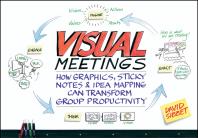 Visual Meetings : How Graphics, Sticky Notes and Idea Mapping Can Transform Group Productivity
Visual Meetings : How Graphics, Sticky Notes and Idea Mapping Can Transform Group Productivity
Books by Edward Tufte include the following which are all available in Print format only at the Library:
